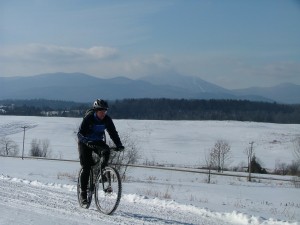From the peoplepoweredmovement

 (242 pages, 24 MB) Downloaded 8 times
(242 pages, 24 MB) Downloaded 8 times
Bicycling and Walking in the U.S.: 2012 Benchmarking Report is an essential resource and tool for government officials, advocates, and those working to promote bicycling and walking. The Benchmarking Project is an on-going effort by the Alliance for Biking & Walking to collect and analyze data on bicycling and walking in all 50 states and the 51 largest U.S. cities. This third biennial report reveals data including: bicycling and walking levels and demographics; bicycle and pedestrian safety; funding for bicycle and pedestrian projects; written policies on bicycling and walking; bicycle infrastructure; bike-transit integration; bicycling and walking education and encouragement activities; public health indicators; and the economic impact of bicycling and walking. The report is full of data tables and graphs that show how your state or city stacks up, and provides unprecedented statistics to help support your case for increasing safe bicycling and walking in your community. Bicycling and Walking in the U.S.: 2012 Benchmarking Report was funded by theCenters for Disease Control and Prevention and made possible through the additional support of AARPand Planet Bike. Main Conclusions:
 This report shows that increasing bicycling and walking are goals that are clearly in the public interest.
This report shows that increasing bicycling and walking are goals that are clearly in the public interest.Where bicycling and walking levels are higher, obesity, high blood pressure, and diabetes levels are lower. Higher levels of bicycling and walking also coincide with increased bicycle and pedestrian safety and higher levels of physical activity. Increasing bicycling and walking can help solve many serious problems facing our nation.
As this report indicates, many states and cities are making progress toward promoting safe access for bicyclists and pedestrians, but much more remains to be done.
Making the Case for Increased Investment in Bicycling and Walking
 As this report shows, the United States overall has great disparities between bicycling and walking mode share, safety, and funding. Twelve percent of trips are by bicycle or foot, yet bicyclists and pedestrians make up 14% of traffic fatalities and receive just 1.6% of federal transportation dollars.
As this report shows, the United States overall has great disparities between bicycling and walking mode share, safety, and funding. Twelve percent of trips are by bicycle or foot, yet bicyclists and pedestrians make up 14% of traffic fatalities and receive just 1.6% of federal transportation dollars.An international comparison of bicycle funding and mode share by Gotschi and Mills and the Rails-to-Trails Conservancy (see Chapter 4, page 96) demonstrates that international cities that invest greater amounts per capita in bicycling have greater levels of bicycling. These cities provide strong evidence that in order to increase bicycling and walking, the United States must invest significantly more in these modes.
Looking Outside Our Borders
It is also crucial that the United States look to other countries to see what mode share levels are possible, and how they have increased bicycling, walking, and safety. The United States lags far behind other countries and international cities in regard to walk and bike share of trips, safety, and public health.
As this report shows, the countries and cities with the greatest levels of bicycling and walking are also the safest places to bicycle and walk. These countries also have the lowest levels of obesity and report that prioritizing bicycling and walking is good for their economies.
The Economic Impact of Bicycling and Walking
 As economic recession has impacted communities across the nation, active transportation has emerged as a promising sector for growth and revitalization. Bicycling and walking projects create 11-14 jobs per $1 million spent, compared to just 7 jobs created per $1 million spent on highway projects. A series of case studies in 2010, examining the construction of U.S. bicycle and pedestrian facilities, found that such projects created between 218 and 1,050 new construction jobs.
As economic recession has impacted communities across the nation, active transportation has emerged as a promising sector for growth and revitalization. Bicycling and walking projects create 11-14 jobs per $1 million spent, compared to just 7 jobs created per $1 million spent on highway projects. A series of case studies in 2010, examining the construction of U.S. bicycle and pedestrian facilities, found that such projects created between 218 and 1,050 new construction jobs.After an initial economic boost from construction, pedestrian and bicycle infrastructure has a lasting impact on local economies. A 2009 study in Minnesota found that bicyclists on state trails spend $2.4 billion annually, supporting nearly 31,000 full- and part-time jobs. A survey of San Francisco business owners on Valencia Street found that two-thirds of merchants thought the street's bike lanes had an overall positive impact on their business or sales.
Bicycling and walking also results in significant cost savings on health care spending. If just one out of every 10 adults started a regular walking program, the U.S. could save $5.6 billion in health care costs — enough to pay the college tuition of more than 1 million students. Thanks to bicycle infrastructure and programming, the City of Portland expects to see between $388 and $594 million in health savings by 2040. Cost benefit analysis show that as much as $11.80 in benefits can be gained from every $1 invested in bicycling and walking.
Promoting Active Transportation and Safety
This report highlights numerous measures to promote bicycling and walking. As Chapter 7 discusses, a variety of policy measures and provisions are likely needed to make communities more bicycle- and pedestrian-friendly.
Just as it took a large investment of public money in roads, signals, signs, and education for motorists, so too will it take an ongoing commitment of public investment in bicycling and walking to see major shifts toward these modes. Although greater investment in bicycling and walking is the primary recommendation of this report, there are many other measures that must be taken to simultaneously strengthen public policy, infrastructure, and behavior toward bicycling and walking.





















